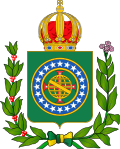Augusto Stahl

Theóphile Auguste Stahl (Bergamo, May 23, 1828 – Brumath, Alsace, October 30, 1877)[1] or simply Augusto Stahl, as he was known in Brazil, was a French photographer who lived during the 19th century. Born in Bergamo, in Italy, son of a Lutheran priest, Stahl disembarked in Recife on December 31, 1853, on board the ship Thames, of the Royal Mail. He operated in Pernambuco until 1861, moving to Rio de Janeiro and receiving from the emperor D. Pedro II the title of Photographo da Casa Imperial (Photographer of the Imperial House), on April 21, 1862. A landscape photographer, Stahl demonstrated an interest in tropical nature. He also documented the construction of the second Brazilian railway and Emperor Pedro II's visit to Recife, in 1858. He participated in various photographic expositions in the 1860s. Stahl is also known for portraying the everyday life of enslaved Black people.[2]
- Augusto Stahl Photographic Collection
-
 Slave in Brazil, 1865
Slave in Brazil, 1865 -
 Racial type portrait, identified as Mina Igeichà, Rio de Janeiro, 1865
Racial type portrait, identified as Mina Igeichà, Rio de Janeiro, 1865 -
 Isabel, Princess Imperial of Brazil, 19, c. 1865
Isabel, Princess Imperial of Brazil, 19, c. 1865
References
External links

- Mini-biography of Augusto Stahl
- Photojournalism in Nineteenth Century Brazil: A Methodological Approach (Essay focuses on the works of Augusto Stahl and Revert Henrique Klumb)
- v
- t
- e
- History (Independence of Brazil, First Reign, Regency, Second Reign)
- Economy
- Nobility
- Provinces
- Units of measurement

| Political instances |
|
|---|---|
| Others |
| Armed Forces | |
|---|---|
| Wars |
|
| Abolitionists | |
|---|---|
| Others |
 | This article about a Brazilian artist is a stub. You can help Wikipedia by expanding it. |
- v
- t
- e
 | This article about a photographer is a stub. You can help Wikipedia by expanding it. |
- v
- t
- e















